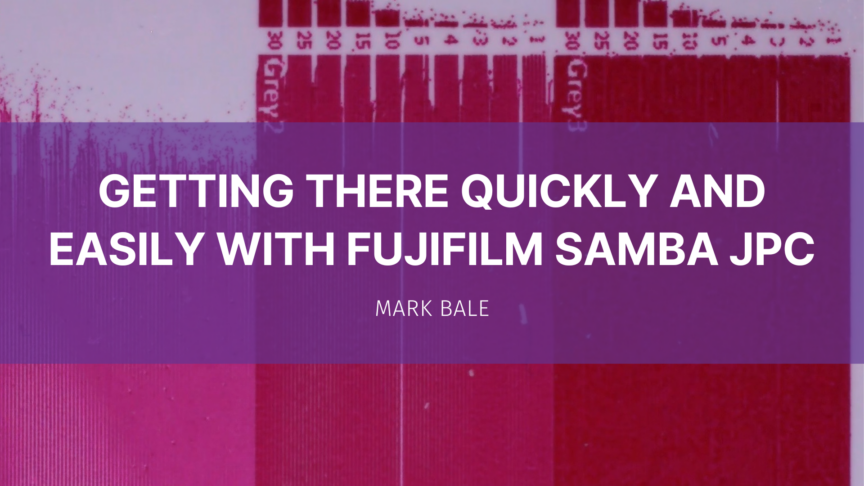Sponsored Content
In our previous article, we introduced some of the available Fujifilm print bar technology suitable for UV applications and discussed the importance of precise ink control and head cleaning to achieve reliability. We also discussed the critical role of printhead electronics on the capability of an overall inkjet printing system. In this article we explore the additional FUJIFILM SAMBA JPC (SAMBA printhead) offerings available to optimize the quality of printing, and we highlight some of trade-offs that should be considered when defining a print system and process.
A quick refresher on SAMBA® printhead technology
Before we can explain why some of the more advanced SAMBA JPC components are so valuable, we have to place them in the context of the SAMBA printhead structure and nozzle layout. The Si-MEMS fabricated printhead offers 1200dpi in a neat, elegant, and configurable package than can be stitched in compact arrays to achieve the needs of a wide variety of applications using both water-based, UV-curable and solvent-based printing inks.
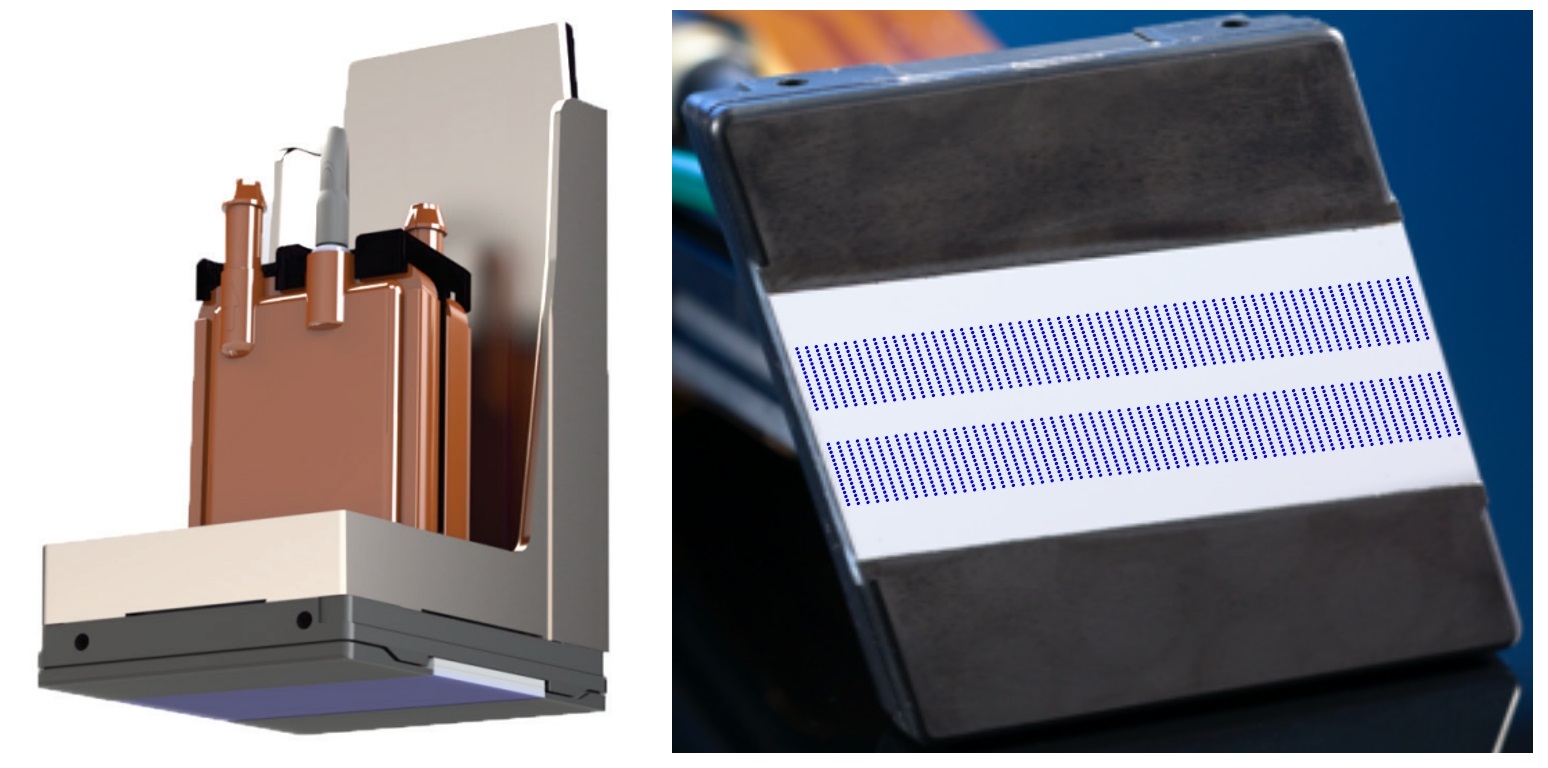
Fig1: Depiction of SAMBA printhead nozzle and a produced 2D array layout (Source: Fujifilm)
Regardless of supplier, achieving such high-resolution printing with a piezo-based printhead generally requires multiple rows of nozzles, especially when compared to the equivalent thermal printhead design. As a result, the nozzles that print into adjacent pixels in the image raster are not necessarily right next to each other on the silicon. Therefore, it is a complex process for printhead developers to determine when exactly to have each of their developed nozzles fire. Quite small variations in substrate speed can cause havoc with the print quality. Ensuring consistent print quality is a key advantage of the SAMBA JPC component toolset.
The importance of exact timing
Of course, if multiple printheads are used to form a single-pass printbar, either to print monochrome or with multiple colors in a CMYK+ system, then this difference in nozzle placement becomes an even more sensitive situation when coordinating the timing of the firing of the drops relative to substrate movement.
As part of the SAMBA JPC component toolset, Fujifilm offers a Timing Control Unit to help mitigate the print quality reduction that can occur as a result of inconsistent substrate movements. Keep in mind that with a digital printing system, the movements of any inkjet substrate must be monitored and controlled to define a print speed and then provide a pixel timing signal in the digital domain. With analog printing, on the other hand, the physical size of the printing plate or gravure etching sets the image dimension.
Most often in roll-fed systems, this monitoring and control function is done using an incremental rotary encoder mounted either to the drive system motor, or to a separate idling roller. These, small but critical, devices output a number of pulses per rotation which can be translated into a distance value based on the known diameter of the roller upon which it is mounted (Fun fact: just like nozzles in a printhead, the number of encoder pulses per rotation is typically a factor of 2 (as depicted in Figure 2 below) such as 2048!).
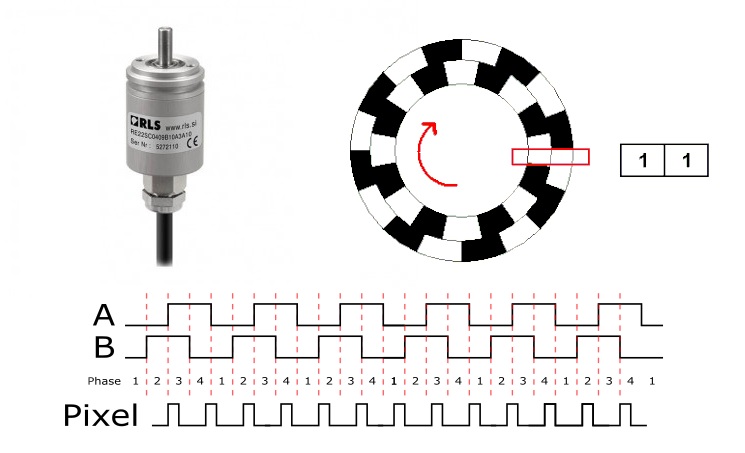
Figure 2: Photo of an RLS rotary encoder (Source RLS) and illustration of the RS422 pulse train typically used by printhead electronics (Source: Wikipedia)
In Figure 2 above, the 2048 pulses in each A/B phase result in an overall sensitivity to movement of 12.2 microns when mounted on a 100mm (4in.) roller. The pixel pulses at 1200 dpi are calculated using an encoder divide of 1.734. It is a calculation, and like many calculations can be subject to errors derived from the real mechanics, especially if the measurement point is not directly adjacent to the printhead. The SAMBA JPC Timing Control Unit takes the encoder pulses and analyzes them to ensure that the print timing control signals to the nozzles are managed correctly to ensure printing in the right locations from each nozzle in the array. The SAMBA JPC Timing Control Unit is compatible with linear or rotary encoders and from 25 to 5,080 dpi.
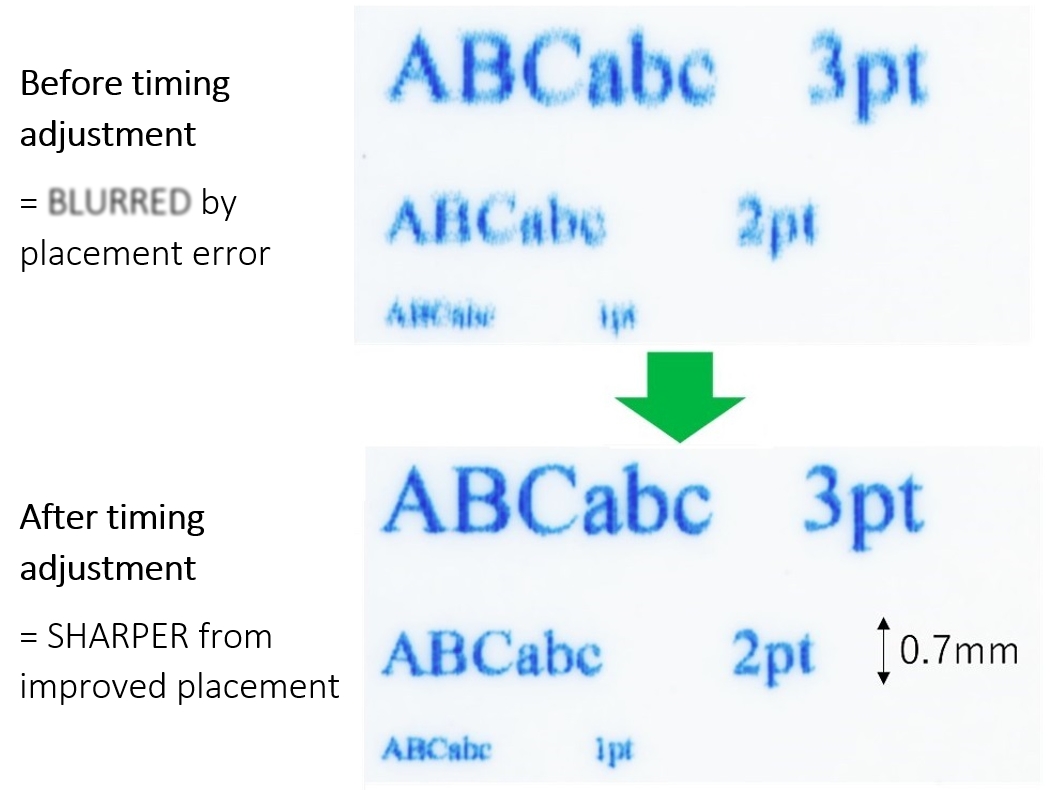
The advantage of the SAMBA JPC Timing Control Unit is perhaps most apparent when looking at features like fine text and small, 2D data matrix codes (commonly known by a sub-set called QR codes). As exemplified in Figure 3, the correction results in notably less blurring and better readability.
Keeping things running
Getting ink in the right place is just the start when it comes to managing print quality since the printhead and the ink flow within it are a dynamic system. The ability to actively manage the print quality is impacted by a number of important factors that can change performance over time. The most common factor is the onset of nozzle failures due to the interaction between the ink and the printhead. In all inkjet print systems, the ability to jet straight is very dependent on the nozzle plate. The SAMBA printhead has a non-wetting nozzle coating designed to limit the impact of ink that can collect between cleaning cycles. Figure 4, below, gives two examples from the Author’s laboratory when running the SAMBA G3L printhead with a UV ink in two different instances. The extent of nozzle wetting in the top image is manageable and almost all nozzles remain firing, but the nozzle wetting evidenced in the bottom image resulted in multiple contiguous nozzle failures.
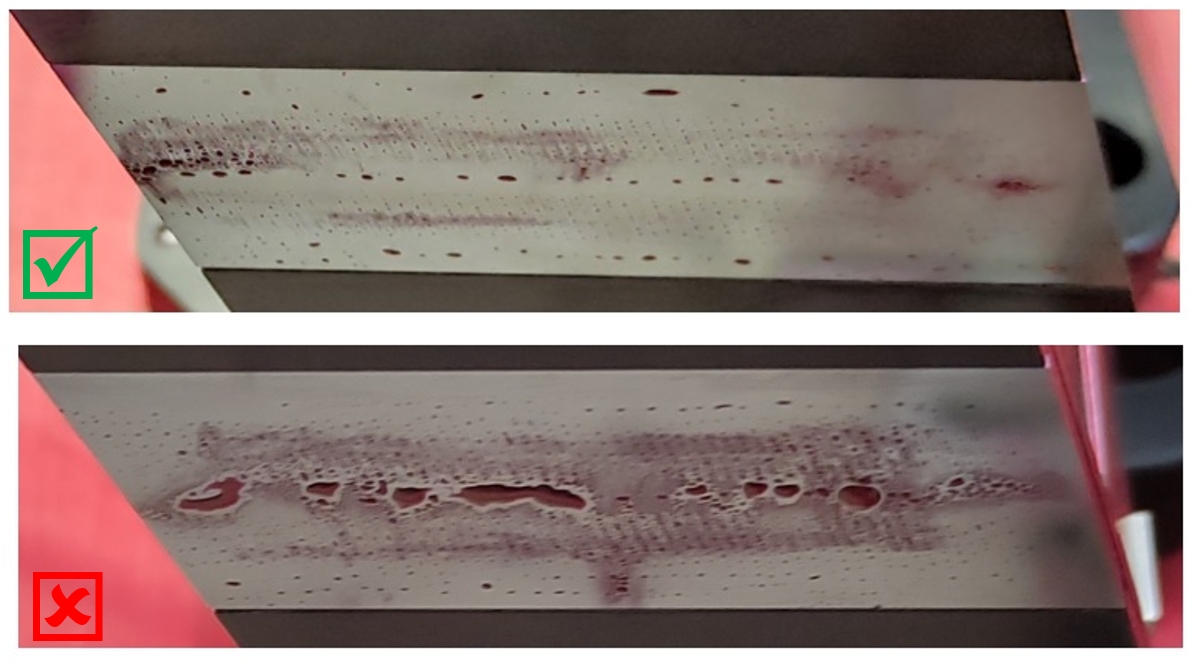
Figure 4: Illustrations of SAMBA G3L printhead nozzle wetting phenomena experienced with alternative configurations (Source: DoDxAct)
When the first case is encountered, the missing or deviating jets can be identified optically and corrected by manipulating the printing data to cover up the gap. We talked about this in general terms in a previous Inkjet Insight article. It is a complex manipulation to perform actively during the printing process, since it combines image analysis software with correction algorithms that have to be calculated quickly to enable print quality to be maintained when printing at high speed.
Fujifilm offers a SAMBA JPC component, the In-Line Scanner (ILS), to make it easier for developers who integrate printbars using SAMBA printheads to implement this kind of correction dynamically. It does more than help with missing jets — it also addresses banding issues that can arise as a result of root causes other than nozzle wetting. One example of this is color density (banding) arising from droplet volume variation across wide widths, a configuration that is becoming more common in order to meet the demands of certain applications such as décor and corrugated packaging. Using the ILS, the initial printing condition can first be calibrated as part of the set-up process and thereafter adjusted in real time. Figure 5 below shows the appearance of the module from the bottom end and also gives an example based on the intentional defects created by turning off some of the SAMBA printhead nozzles.
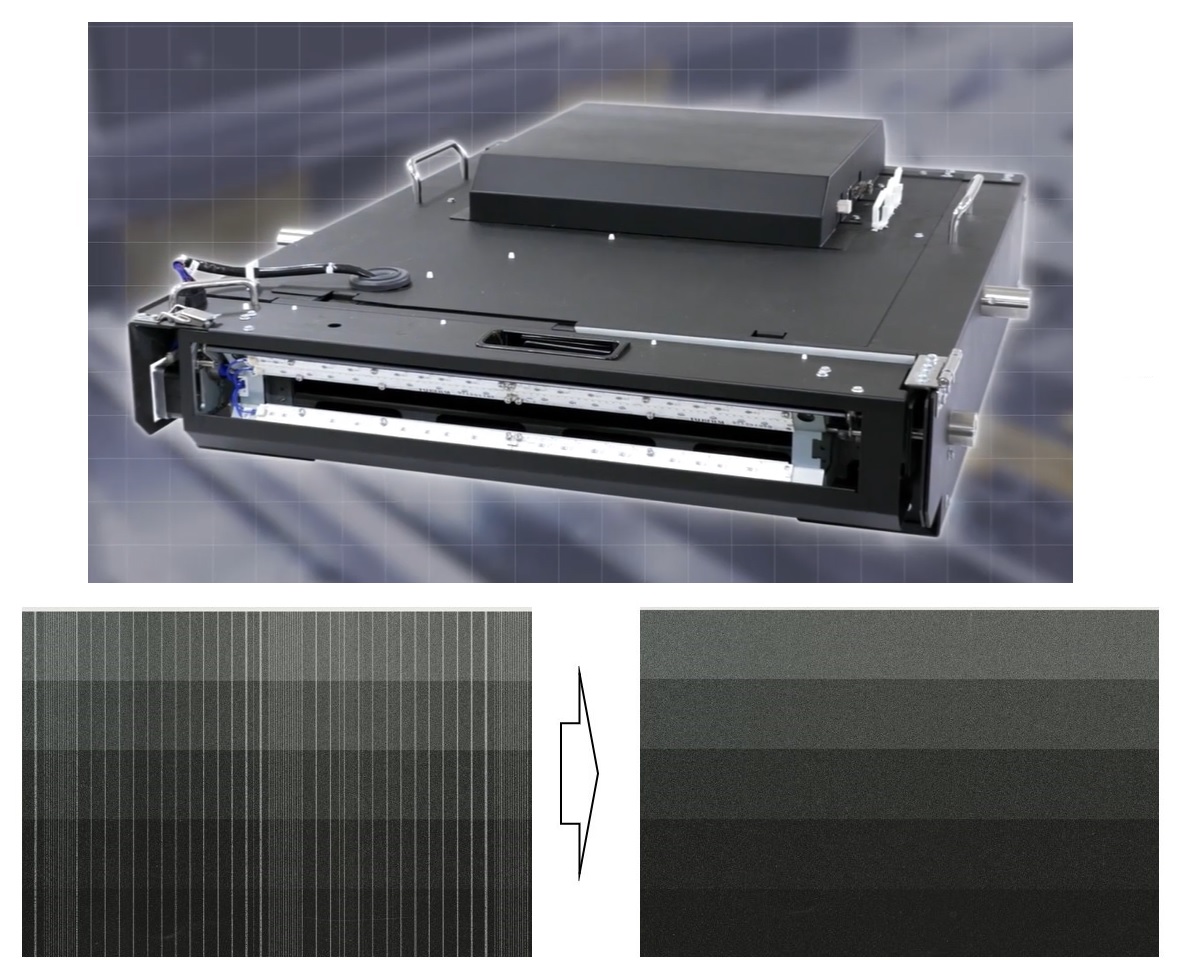
Figure 5: Simulation of the SAMBA JPC ILS and Image Compensation SW component solution for typical missing nozzle and banding issues. (Source: Fujifilm)
The precise method for compensation to address these types of printing issues depends on the type of defect, as well as the color required in the printed pattern. However, when replacing the ink volume from an adjacent nozzle ( a common approach to addressing these issues), the results will be heavily dependent on the printhead’s extra capacity as well as on ink and substrate interaction.
It is helpful to keep in mind that replacing the missing ink quantity usually requires some form of redundancy, especially in a single-color system. This can be provided in the form of an additional row of printheads (which requires an additional cost) or by having some extra bandwidth in terms of droplet volume. With piezo-based printheads, for example, having time to make an extra droplet in a greyscale waveform usually changes the maximum print frequency that is possible. That approach typically compromises the maximum possible print speed as shown in the example below (Figure 6).
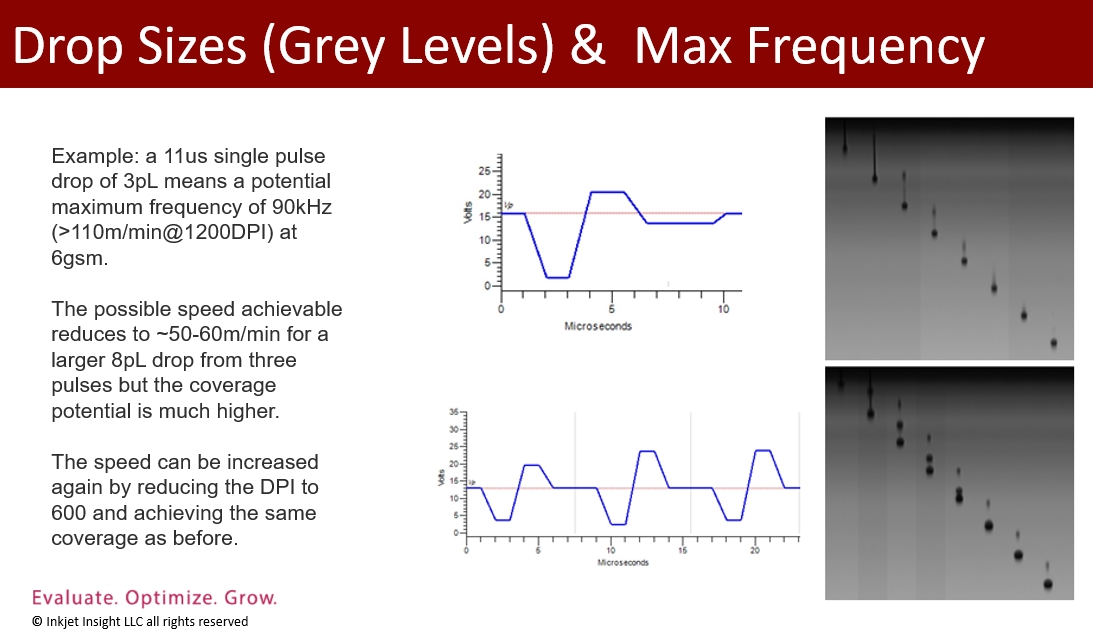
Figure 6: Depiction of the trade-offs between drop size and pulse frequency and speed (Source: Inkjet Insight LLC Inkjet Explainer webinar “Inkjet Head Technology Explained” presented by Mary Schilling and Mark Bale February. Used with permission.)
Maximizing Productivity
The ability to maximize the return on investment in a digital printing system is dependent on being able to make and sell the printed output / product as efficiently as possible. The practical reality of inkjet is that there is always a compromise between running at the absolute fastest speed possible and achieving the most consistent quality. The SAMBA printhead has set the 1200 dpi standard that has become synonymous with “offset” quality printing at speeds starting to approach those possible with analog methods, including offset-lithography and rotogravure.
With a SAMBA JPC single-pass printing system, the print speed is a direct function of the frequency at which the head can be driven with the target droplet volume (including any spare capacity for correction) and the addressability of the print process in the print direction. This performance is akin to traditional multi-pass inkjet printers – including those running a 4-pass draft mode at 720 x 720 dpi or a 16-pass high quality/photo mode at 1440 x 1440 dpi.
In a single-pass printing system, it is common to sacrifice the dpi to increase the top-line speed. However, the effect on print quality is highly ink-substrate dependent since that combination determines the ability to achieve a uniform color (no whitespace) as a function of the coverage. The SAMBA G5L was introduced to increase the print speed possible for select applications at a given coverage, producing a maximum output in binary printing at 120kHz with a 1200 x 600 addressability – shown as a graph in Figure 7 below. If higher speeds or higher speed with more coverage are required, then the next step is to introduce more printheads and share the volume between them, as shown in the droplet laydown schematics of Figure 8.
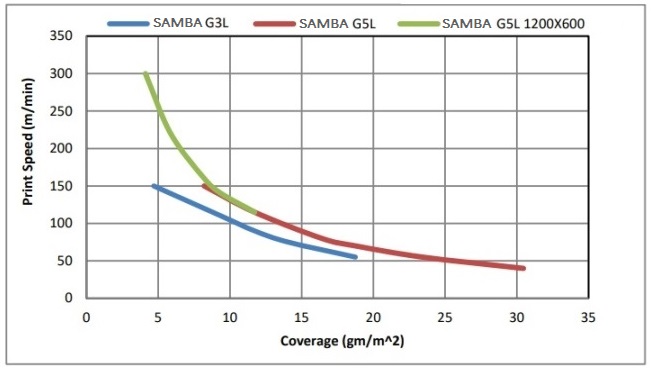
Figure 7: Illustration of the speed and ink coverage capabilities of SAMBA G3L and G5L printheads at 1200 dpi as compared with the SAMBA G5L at 1200 x 600. (Source: Fujifilm)
Comparing the SAMBA G3L and G5L printheads, respectively, at full 1200 x 1200 dpi resolution (shown in blue and red respectively in Figure 7 above) demonstrates the higher speed and higher ink coverage (in grams per square meter) of the SAMBA G5L. When the SAMBA G5L is run at lower resolution in the print-direction (shown in green), it can deliver dramatically higher speeds with ink coverage of less than 15 gm/m2 . The speed can be increased further by sharing the droplet between multiple heads as shown in the dot schematics reflected in Figure 8 below.
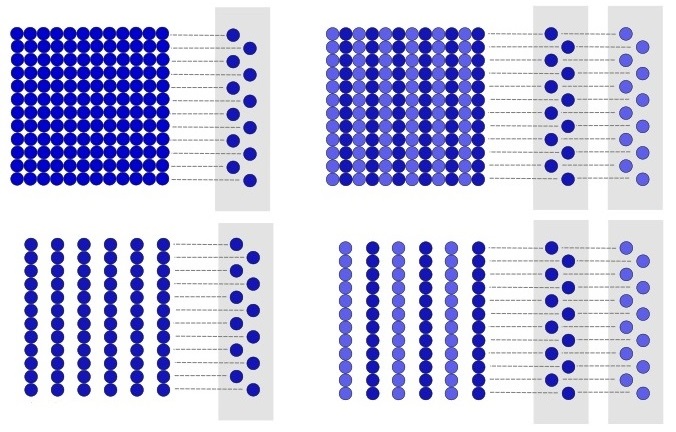
Figure 8. Illustration of potential dot schematic efficiency gains from dot sharing between SAMBA printheads. (Source: DoDxAct)
Although having multiple print bars may increase the capital cost of a printing system significantly, the approaches described in Figures 7 and 8 with SAMBA printhead products have permitted printing at speeds in excess of 1000ft/min (>300m/min) to be achieved. Keep in mind that the inkjet droplets themselves typically are ejected with speeds ~7-10m/s (400m/min). Therefore, at some point there will be a physical limit for achieving the high quality droplet placement we spoke about at the beginning of this article. Again, the SAMBA G5L printhead can make achieving maximum speed without sacrificing print quality easier by ejecting slightly larger droplets.
Other Factors Affecting Productivity
The cleaning of the printhead is another very important factor for maximizing the utilization of a printing system. Figure 9 illustrates the importance of printhead cleaning, and the SAMBA printhead product range includes a printhead cleaning unit based on a wiping system designed to have a low impact on the non-wet coating of the nozzle plate.
Effective control of ink pressure in the delivery system is also central to minimizing nozzle wetting effects that can occur during high-speed print runs. Temperature is also important since it influences the ink viscosity, especially for UV inks. Fujifilm’s SAMBA products are engineered with these factors in mind.
Furthermore, when using fast-drying water-based inks (i.e. the formulations typically offered for high-speed packaging printing), the ability to provide a safe environment in which the heads can sit when idle is also of crucial importance. Inks that contain latex resins for better film performance can be quite sensitive and partial drying can occur, especially during those idle times. Partial drying can result in nozzle degradation over time, even in implementations using Fujifilm’s REDIJET® recirculation technology.
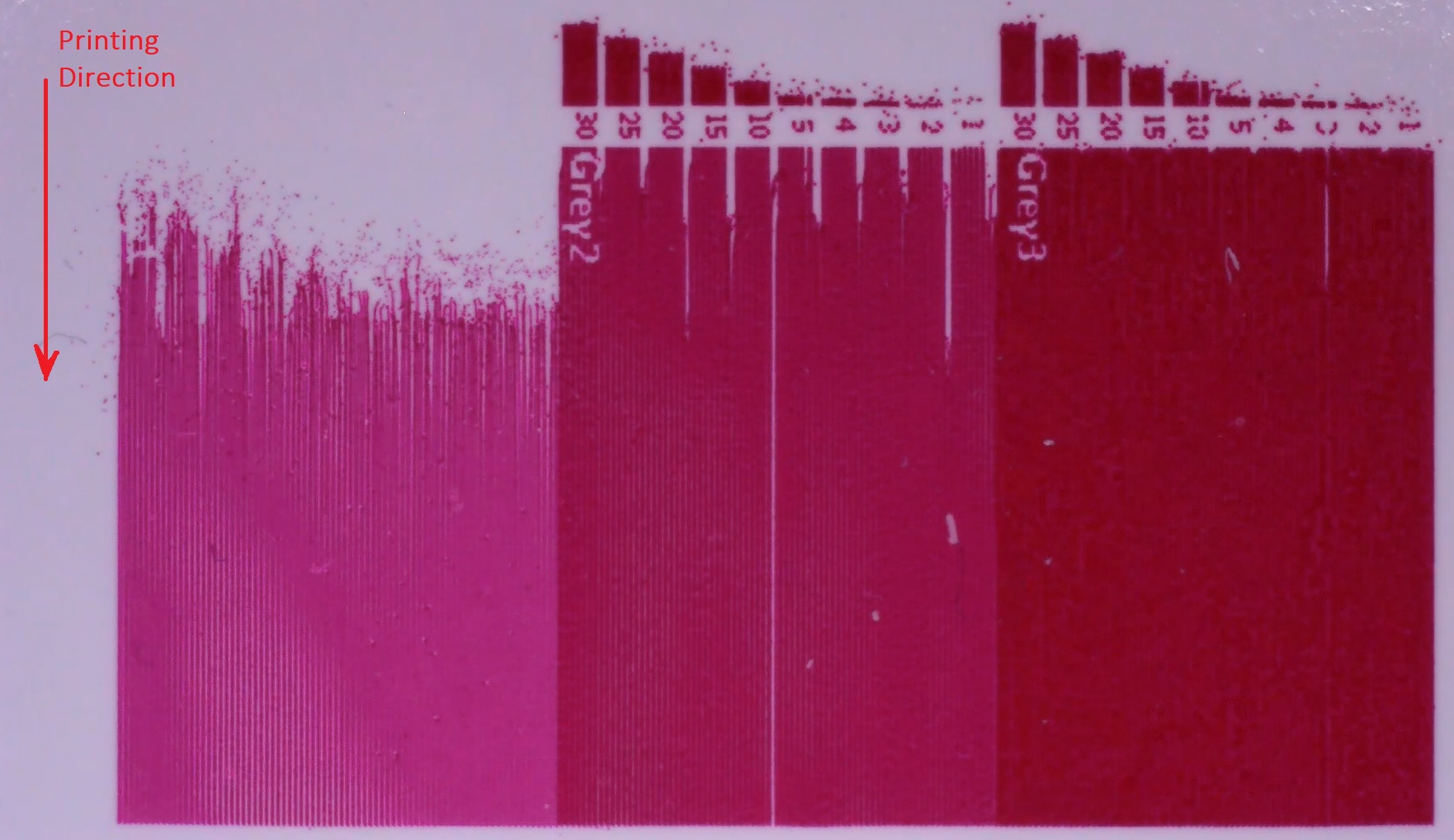
Figure 9: Example of Nozzle start-up effect with a water-based ink (Source: DoDxAct).
By controlling humidity and temperature in and around the nozzles while the printing system is idle, the SAMBA JPC capping module makes it easy for OEMs to offer a best-practice solution designed to maintain the system in a print-ready state and to support an overall performance that also extends the SAMBA printhead life.
This article hopefully provides helpful clarification and information regarding the various important parameters that determine print process targets and that will ultimately allow OEMs and inkjet solution developers to get the most out of their SAMBA printhead and overall printing system. With proper controls in place, the SAMBA printhead service lifetime can be maximised, thus minimising printhead replacement costs over time. This makes arguments about the cost per nozzle of any individual printhead less relevant and instead turns the sales discussion into a meaningful conversation about the total cost of ownership.
FUJIFILM, SAMBA JPC, SAMBA, and REDIJET are registered trademarks of FUJIFILM Corporation and its affiliates.

